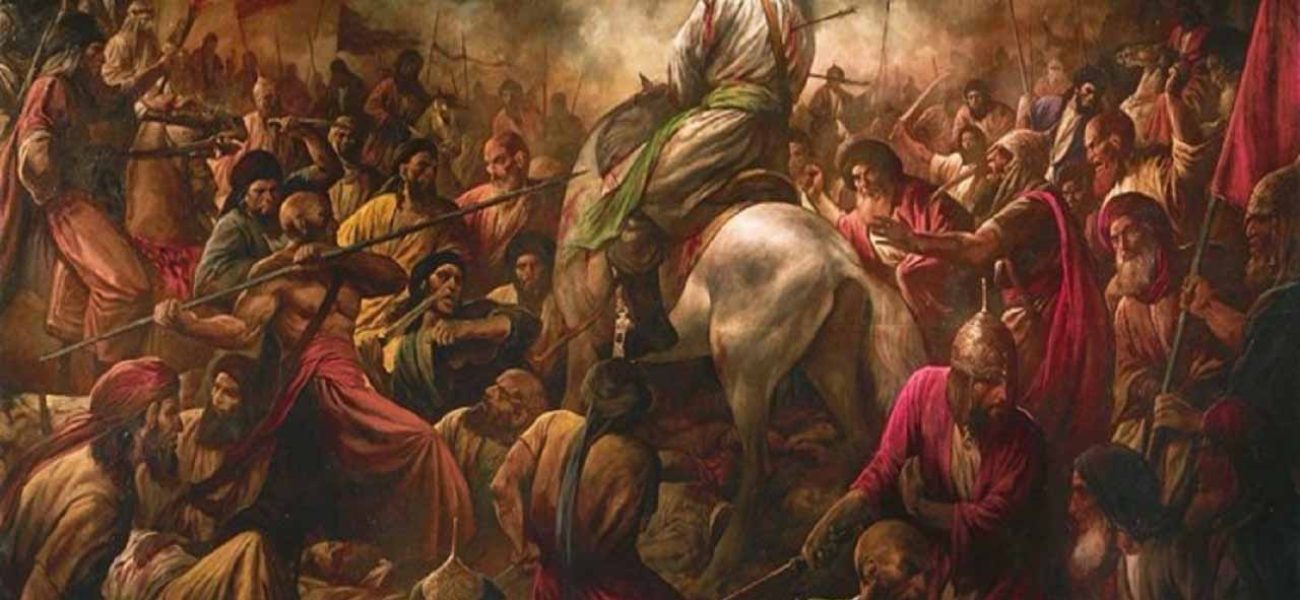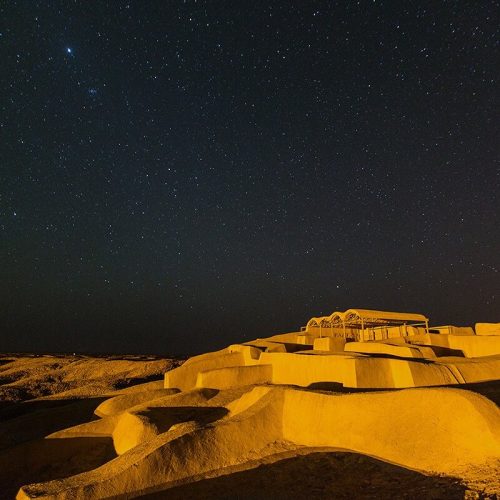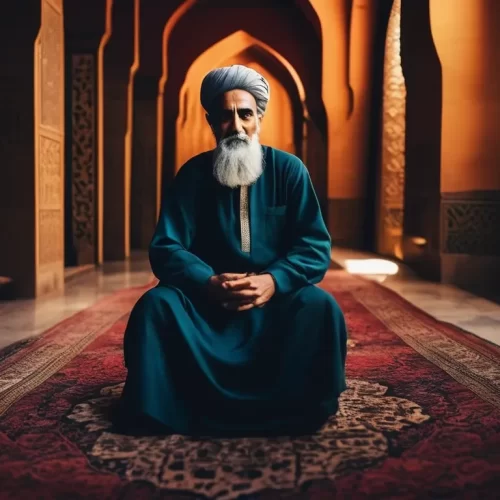The grand tapestry of Persian poetry is adorned with myriad luminaries, each weaving their unique strands into the collective cultural heritage of Iran. Among these figures, the name of Mohtasham Kashani resonates with particular distinction. Living during the Safavid era, a period marked by both cultural renaissance and political turbulence, Mohtasham Kashani’s poetic genius not only captured the essence of his time but also transcended it, leaving an indelible mark on the literary landscape of Iran. Here, we delve into the life, works, and enduring legacy of Mohtasham Kashani, exploring the intricate beauty and profound depth of his poetry.
The Life of Mohtasham Kashani
Early Life and Background
Mir Sayyed Ahmad, known by his pen name Mohtasham Kashani, was born around 1528 in the city of Kashan, a town renowned for its cultural and artistic heritage. Kashan, located on the fringes of the central desert of Iran, provided a unique blend of tranquility and inspiration, nurturing the young poet’s burgeoning talent. Kashan’s climate and geography, with its lush gardens juxtaposed against the stark desert, created an environment ripe for poetic inspiration. This duality of landscape—the juxtaposition of verdant oases and arid expanses—mirrors the themes of contrast and beauty often found in Mohtasham’s poetry.
Mohtasham was born into a family of religious scholars, a background that significantly influenced his early education and intellectual pursuits. His father, Mir Sayyed Mohammad, was a respected scholar, and the young Ahmad was exposed to a rigorous curriculum that included theology, philosophy, and classical Persian literature. This scholarly environment fostered a deep appreciation for the rich literary and spiritual traditions of Iran, laying the groundwork for his future poetic endeavors.
The formative years of Mohtasham’s life were steeped in the rich tapestry of Persian culture and intellectual thought. He was introduced to the works of renowned poets such as Rumi, Hafez, and Saadi, whose verses left an indelible mark on his burgeoning literary sensibilities. The influence of these masters is evident in Mohtasham’s own poetry, which often reflects a blend of mystical reflection, lyrical beauty, and philosophical depth.
The Safavid Context
The Safavid dynasty, which reigned from 1501 to 1736, marked a period of significant transformation and cultural renaissance in Iran. This era witnessed the establishment of Twelver Shi’ism as the state religion, a move that profoundly reshaped the cultural, spiritual, and political landscape of the nation. Under the Safavids, Iran experienced a flourishing of the arts, architecture, and literature, with poetry emerging as a potent medium for both personal expression and social commentary.
Mohtasham Kashani’s life and works were deeply intertwined with the dynamics of this vibrant epoch. The Safavid rulers, particularly Shah Ismail I and Shah Abbas I, were great patrons of the arts and actively encouraged the cultivation of Persian culture and literature. This patronage provided poets like Mohtasham with the support and recognition necessary to pursue their craft and to contribute to the rich cultural mosaic of the era.
During the Safavid period, the court and aristocracy played a crucial role in the dissemination and appreciation of poetry. Literary salons and gatherings, known as “majlis,” were common, where poets would recite their works and engage in intellectual discourse. These gatherings not only facilitated the exchange of ideas but also provided poets with the opportunity to refine their craft and gain patronage. Mohtasham Kashani, with his exceptional talent, became a prominent figure in these literary circles, earning the admiration of his contemporaries and the patronage of the elite.
The Safavid era was also characterized by a heightened sense of religious and cultural identity, which is reflected in Mohtasham’s poetry. His works often explore themes of spiritual longing, divine love, and the quest for transcendence, echoing the broader metaphysical concerns of the time. The Safavid emphasis on Shi’ism also influenced Mohtasham’s poetic themes, particularly his elegy on the martyrdom of Imam Husayn, which remains one of his most celebrated compositions.
Personal Life and Literary Pursuits
Mohtasham Kashani’s personal life was as rich and complex as his poetry. He was known to be a deeply spiritual individual, whose religious devotion and philosophical inquiries were mirrored in his verses. His poetry often reflects a sense of existential contemplation and a quest for understanding the divine mysteries, themes that resonate with the broader Sufi tradition in Persian literature.
Despite his intellectual and artistic pursuits, Mohtasham was also deeply connected to the everyday life of his community. He lived during a time of significant political and social change, and his poetry often reflects a keen awareness of the human condition and the struggles of his contemporaries. This connection to the common people, combined with his intellectual and spiritual insights, gave his poetry a universal appeal that transcended the boundaries of class and education.
Mohtasham Kashani’s marriage and family life also played a significant role in shaping his poetic sensibilities. His experiences of love, loss, and familial bonds are reflected in the tender and emotive qualities of his verses. The support and inspiration he received from his loved ones undoubtedly contributed to the depth and sincerity of his poetic expressions.
Later Years and Legacy
As Mohtasham Kashani grew older, his reputation as a poet and scholar continued to flourish. He became a respected figure in the literary and intellectual circles of his time, admired not only for his poetic talents but also for his wisdom and integrity. His later years were marked by a sense of fulfillment and contentment, as he continued to compose poetry that resonated with the spiritual and emotional needs of his audience.
Mohtasham Kashani passed away in 1588, leaving behind a rich legacy of poetic works that continue to inspire and captivate readers to this day. His contributions to Persian literature, particularly his elegy on the martyrdom of Imam Husayn, have earned him a place among the great poets of Iran. His life and works remain a testament to the enduring power of poetry to transcend time and space, connecting us with the eternal truths that lie at the heart of the human experience.
The life of Mohtasham Kashani is a remarkable journey of intellectual and spiritual exploration, set against the backdrop of a dynamic and transformative era in Iranian history. His poetry, with its exquisite beauty and profound depth, offers us a window into the soul of a poet who sought to capture the essence of his time and to convey the timeless wisdom of the human spirit. Through his verses, Mohtasham Kashani continues to inspire and enlighten, guiding us on our own journeys of discovery and reflection.
Mohtasham Kashani’s Poetic Genius
Stylistic Brilliance
Mohtasham Kashani’s poetry is celebrated for its stylistic brilliance, characterized by a masterful command of language and an exquisite sensitivity to rhythm and form. His verses often exhibit a seamless blend of classical Persian poetic conventions with innovative stylistic flourishes, creating a unique and compelling voice. One of his most notable contributions to Persian literature is the development of the “Tarkib-band” and “Tarkib-khatam” forms, intricate structures that allowed for the interweaving of themes and motifs in a sophisticated manner.
The “Tarkib-band” form, which involves the repetition of a particular couplet throughout the poem, allowed Mohtasham to create a resonant echo of his central themes, imbuing his poetry with a sense of continuity and coherence. This form also provided a framework for exploring multiple perspectives within a single composition, enabling Mohtasham to delve deeply into the emotional and philosophical dimensions of his subjects. The “Tarkib-khatam,” on the other hand, is a variation that includes a concluding couplet, which often serves as a poignant and reflective summation of the poem’s thematic journey.
Mohtasham’s stylistic innovation extended beyond structural forms to encompass a rich tapestry of imagery and metaphor. His poetry is replete with vivid and evocative descriptions, drawing on the natural beauty of the Iranian landscape, the intricacies of human emotion, and the profound mysteries of the spiritual realm. His ability to paint intricate pictures with words is evident in lines such as:
“Bazm-e-to roshan konad zolf-e-parishan-e-to, Har gol-e-narges mezanad tarf-e-dehane-to.”
(“Your disheveled hair illuminates the gathering, Every narcissus flower bows to the allure of your lips.”)
In these verses, Mohtasham conjures an image of ethereal beauty, using the symbolism of nature to convey the enchanting presence of the beloved. The interplay of light and darkness, order and chaos, reflects the poet’s mastery of contrast and his ability to evoke complex emotional landscapes.
Themes and Motifs
Mohtasham’s poetry traverses a wide spectrum of themes, from the sublime to the existential. Love, both divine and earthly, occupies a central place in his oeuvre, with his verses often exploring the nuances of passion, longing, and spiritual union. His poetry also reflects a deep engagement with the themes of mortality and the ephemeral nature of worldly existence, echoing the broader metaphysical concerns of Persian Sufi poetry.
Love and Longing
Love, in its myriad forms, is a recurring motif in Mohtasham Kashani’s poetry. His verses often explore the tension between earthly desire and spiritual aspiration, reflecting the dual nature of human experience. In his portrayal of romantic love, Mohtasham captures the intensity of passion and the ache of longing, as seen in the following couplet:
“Gulchehra-e-delbaram, nafas nafas gol be-baad mi-dehad, Dar negaah-e-sherinash, zehr-e-gham goli be-khaad mi-dehad.”
(“The rose-faced beloved, breath by breath, scatters flowers to the wind, In her sweet gaze, the poison of sorrow is a flower in bloom.”)
Here, the beloved is likened to a rose, a symbol of beauty and transience, while the poet’s longing is compared to the wind, restless and ever-present. The juxtaposition of sweetness and poison reflects the complex interplay of pleasure and pain in the experience of love.
Divine Love and Mysticism
Mohtasham’s exploration of love extends beyond the earthly realm to encompass the divine. His poetry often reflects a yearning for spiritual union and a profound sense of devotion to the divine beloved. This mystical dimension of his work is deeply influenced by the Sufi tradition, which seeks to transcend the material world and attain a direct experience of the divine. In his mystical poetry, Mohtasham uses the language of love and longing to articulate the soul’s journey toward God:
“Az masire-eshq ta khane-ye-doost, Har che del ranj me-barad, qadeh haame-ye doost.”
(“From the path of love to the abode of the friend, Whatever the heart endures, is a cup of the beloved.”)
In these lines, the path of love is depicted as a journey toward divine union, where every trial and tribulation is seen as a blessing from the beloved. The metaphor of the cup signifies the soul’s acceptance of both joy and sorrow as gifts from the divine.
Mortality and Transience
The themes of mortality and the ephemeral nature of worldly existence are also central to Mohtasham’s poetic vision. His verses often reflect a contemplative awareness of the transient nature of life and the inevitability of death. This preoccupation with mortality is expressed with a sense of both melancholy and acceptance, as seen in the following couplet:
“Rozgar-e-zendeghi, baaz mi-shekanad har manzelash, Har gol-e-khande be-darsh, zehr-e-tarikh ast be-hash.”
(“The course of life breaks every stage anew, Every smiling flower at its door, carries the poison of time.”)
Here, Mohtasham uses the imagery of a journey to convey the fleeting nature of life, with each stage of the journey marked by both beauty and decay. The smiling flower, a symbol of life’s joys, is also imbued with the poison of time, reflecting the inescapable passage of years and the inevitability of loss.
Philosophical and Ethical Reflections
Mohtasham’s poetry is not only a reflection of personal and mystical themes but also engages with broader philosophical and ethical questions. His verses often contemplate the nature of existence, the human condition, and the moral imperatives of life. This intellectual depth adds a layer of complexity to his work, inviting readers to ponder the profound questions that lie at the heart of the human experience.
Ethical Conduct and Justice
One of the key ethical concerns in Mohtasham’s poetry is the concept of justice and the moral responsibility of individuals. His verses often advocate for ethical conduct, compassion, and the pursuit of justice, reflecting the broader social and religious values of his time. In his poetry, Mohtasham emphasizes the importance of integrity and righteousness:
“Haq be-daste-dar, ta qiyamat fazilat migarad, Har kas az rah-e-adl, rahe raavi ne’mat migarad.”
(“Hold onto truth, until the end of time it remains a virtue, Whoever walks the path of justice, walks in the light of blessings.”)
These lines underscore the timeless value of truth and justice, suggesting that ethical conduct is not only a moral imperative but also a source of divine blessings. Mohtasham’s emphasis on justice reflects the broader ethical concerns of his era, particularly in the context of the Safavid emphasis on religious and moral reform.
Existential Inquiry
Mohtasham’s poetry also engages with existential questions, exploring the nature of existence, the purpose of life, and the quest for meaning. His verses often reflect a sense of wonder and inquiry, inviting readers to contemplate the mysteries of the universe and their place within it. This existential dimension of his work is evident in the following couplet:
“Dard-e-hasti be-barad har nafasi ba to, Har del-e-razi be-girad, har rah-e-khudi be-to.”
(“The pain of existence bears every breath with you, Every heart takes a secret, every path of self with you.”)
In these lines, Mohtasham articulates the profound connection between the individual and the broader cosmos, suggesting that the pain and wonder of existence are intrinsic to the human experience. The reference to the “path of self” reflects the poet’s engagement with the existential quest for identity and meaning.
The Elegy for Imam Husayn: A Masterpiece of Lamentation
One of the most poignant examples of Mohtasham’s thematic depth is his elegy on the martyrdom of Imam Husayn at Karbala, a masterpiece that has earned him enduring acclaim. This elegy, known as “Banda-e-Seh-mah,” is a profound meditation on grief, sacrifice, and the eternal struggle between good and evil. Through his evocative imagery and emotive language, Mohtasham captures the collective sorrow and spiritual fervor that the tragedy of Karbala inspires in the hearts of the Shi’a faithful.
Historical and Religious Significance
The Battle of Karbala, which took place in 680 CE, holds a central place in Shi’a Islam. The martyrdom of Imam Husayn, the grandson of the Prophet Muhammad, is commemorated annually during the month of Muharram, culminating in the solemn observance of Ashura. Mohtasham Kashani’s elegy, composed in the 16th century, is one of the most revered literary tributes to this pivotal event. His verses not only mourn the loss of Imam Husayn but also encapsulate the broader spiritual and ethical dimensions of the tragedy.
Poetic Structure and Imagery
Mohtasham’s elegy is a tour de force of poetic craftsmanship, structured in a series of stanzas that weave together vivid imagery, metaphysical reflections, and poignant expressions of grief. The elegy’s opening lines set the tone for the entire composition, invoking a sense of profound sorrow and spiritual introspection:
“Ey theyq-e-Samawat, maan yadi be-kerbala daram, Az zameen shahrash che sekkeh-ha, ke raftar har rah bar sarash.”
(“O heaven’s vault, I bear a reminder of Karbala, From the earth of its city, what coins of valor it casts.”)
In these lines, Mohtasham evokes the cosmic significance of Karbala, portraying it as a site where the earthly and the divine converge. The imagery of coins (sekkeh-ha) cast from the earth of Karbala symbolizes the preciousness of the sacrifices made by Imam Husayn and his followers, while also alluding to the eternal rewards that await them.
Emotional Resonance
The emotional resonance of Mohtasham’s elegy lies in its ability to convey the depth of human sorrow and the transcendent power of faith. Through his masterful use of language, he captures the anguish of the bereaved, the nobility of the martyrs, and the enduring hope for divine justice. Each stanza unfolds like a sacred lament, drawing the reader into a shared space of mourning and spiritual reflection.
“Az husn-e-rukhsarash, an zamana zaar me-girad, Darde-haza an jaa, ke man-dar har goone payan.”
(“From the beauty of his countenance, that era weeps, The pain endures there, where I stand at every end.”)
Here, Mohtasham portrays the eternal nature of Imam Husayn’s sacrifice, suggesting that the beauty and nobility of his martyrdom transcend temporal boundaries. The “pain” that endures is not only a reflection of historical grief but also a testament to the timeless relevance of the moral and spiritual lessons of Karbala.
Mohtasham Kashani’s poetry stands as a testament to the enduring power of language to convey the deepest human emotions and the most profound spiritual truths. His stylistic brilliance, thematic depth, and innovative use of poetic forms have left an indelible mark on Persian literature, earning him a place among the great poets of Iran. Through his verses, Mohtasham invites us to explore the complexities of love, the mysteries of existence, and the timeless quest for spiritual union. As we immerse ourselves in the rich and evocative world of Mohtasham Kashani’s poetry, we are reminded of the eternal beauty and wisdom that lie at the heart of the human experience.Top of FormBottom of Form
Mohtasham Kashani’s Legacy
Influence on Persian Literature
Mohtasham Kashani’s contributions to Persian literature extend far beyond his elegy for Imam Husayn. His innovative use of poetic forms and his ability to infuse classical themes with fresh perspectives have left an indelible mark on subsequent generations of poets. His works have been studied, imitated, and celebrated by scholars and literary enthusiasts alike, cementing his place in the pantheon of Persian literary greats.
Cultural and Religious Impact
The cultural and religious impact of Mohtasham’s poetry is particularly evident in the way his elegy has been incorporated into the rituals and commemorations of Muharram. Recited and performed during religious gatherings, his verses serve as a powerful medium for communal mourning and spiritual reflection. The enduring popularity of his elegy is a testament to its profound emotional and spiritual resonance, as well as its ability to connect the faithful with the enduring legacy of Imam Husayn.
Contemporary Relevance
In contemporary Iran, Mohtasham Kashani’s poetry continues to be a source of inspiration and reflection. His themes of love, sacrifice, and spiritual longing resonate with modern readers, offering a bridge between the past and the present. As Iran navigates the complexities of modernity, the timeless wisdom and beauty of Mohtasham’s verses provide a touchstone for cultural and spiritual continuity.
Mohtasham Kashani stands as a beacon of poetic brilliance in the annals of Persian literature. His life and works, set against the backdrop of the Safavid era, reflect a profound engagement with the cultural, spiritual, and intellectual currents of his time. Through his masterful use of language and form, he has bequeathed to us a legacy of beauty, wisdom, and spiritual depth. As we delve into the enigmatic verses of Mohtasham Kashani, we are reminded of the enduring power of poetry to transcend time and space, connecting us with the eternal truths that lie at the heart of the human experience.
In the end, Mohtasham’s poetry is not merely a reflection of his era but a timeless testament to the universal human quest for meaning, love, and transcendence. His words continue to resonate, inviting us to explore the depths of our own hearts and to seek the divine amidst the vicissitudes of earthly existence. Through his verses, Mohtasham Kashani remains a guiding star, illuminating the path of beauty, faith, and eternal truth.




